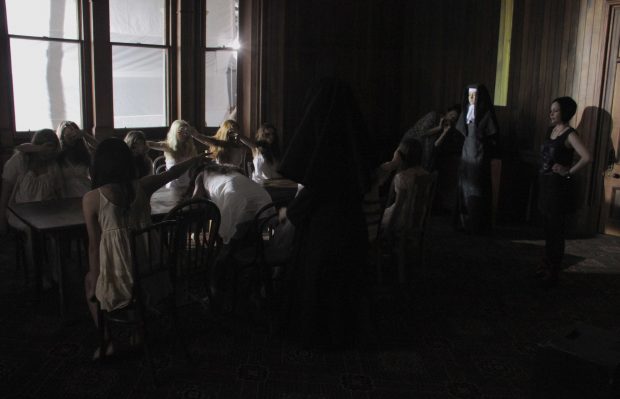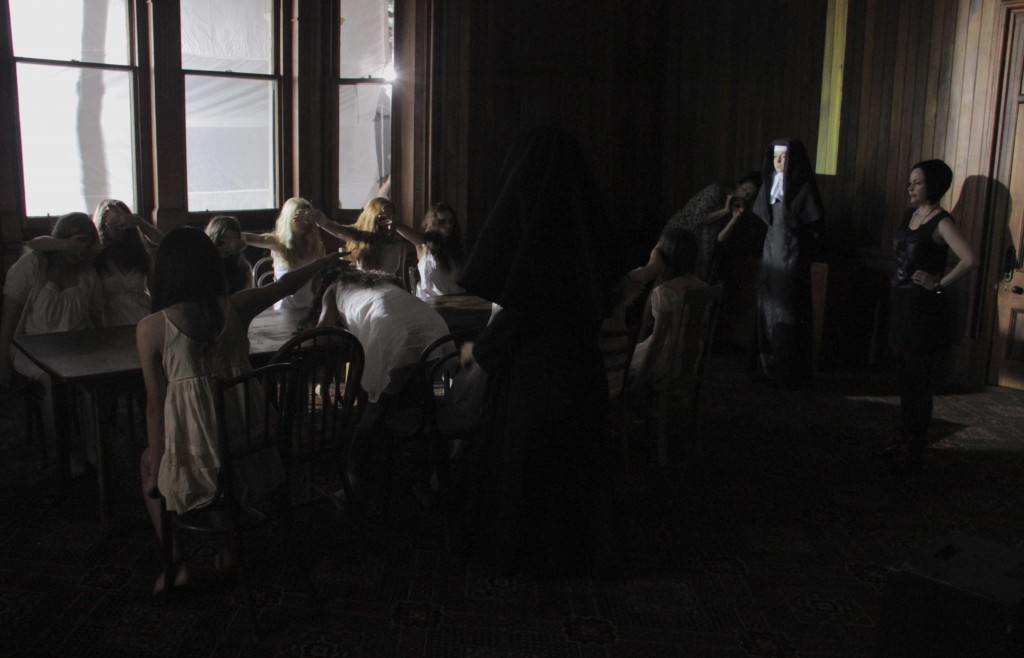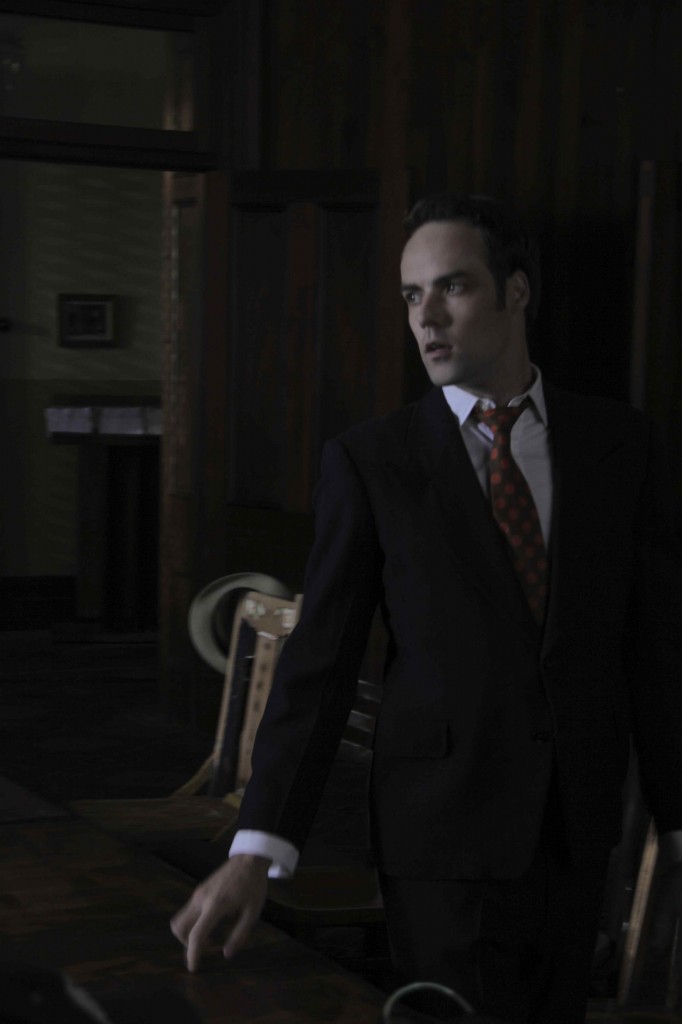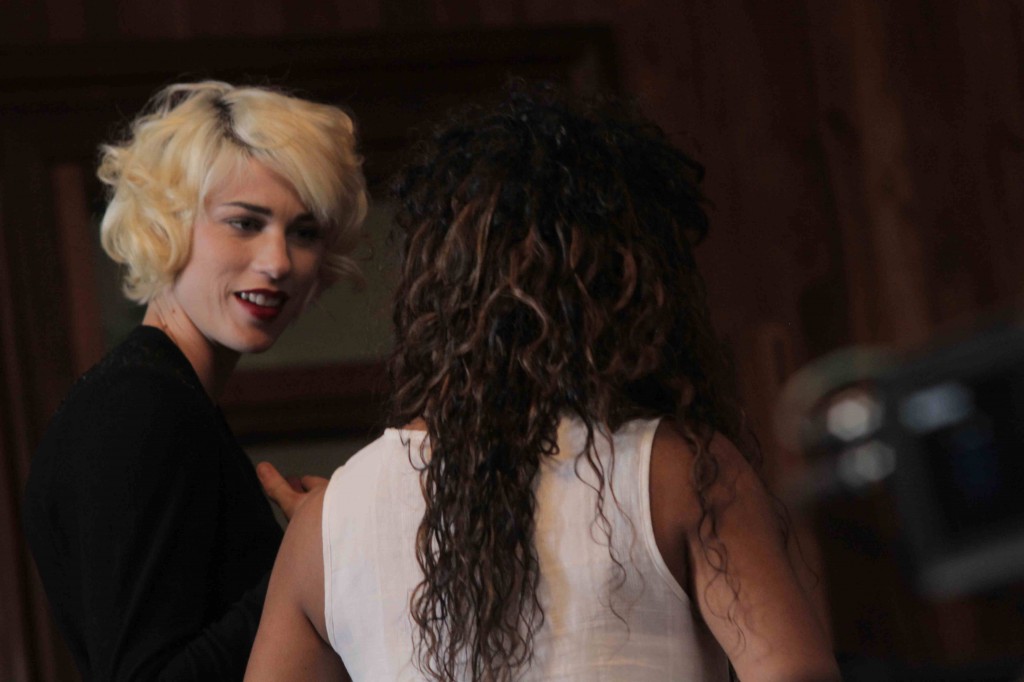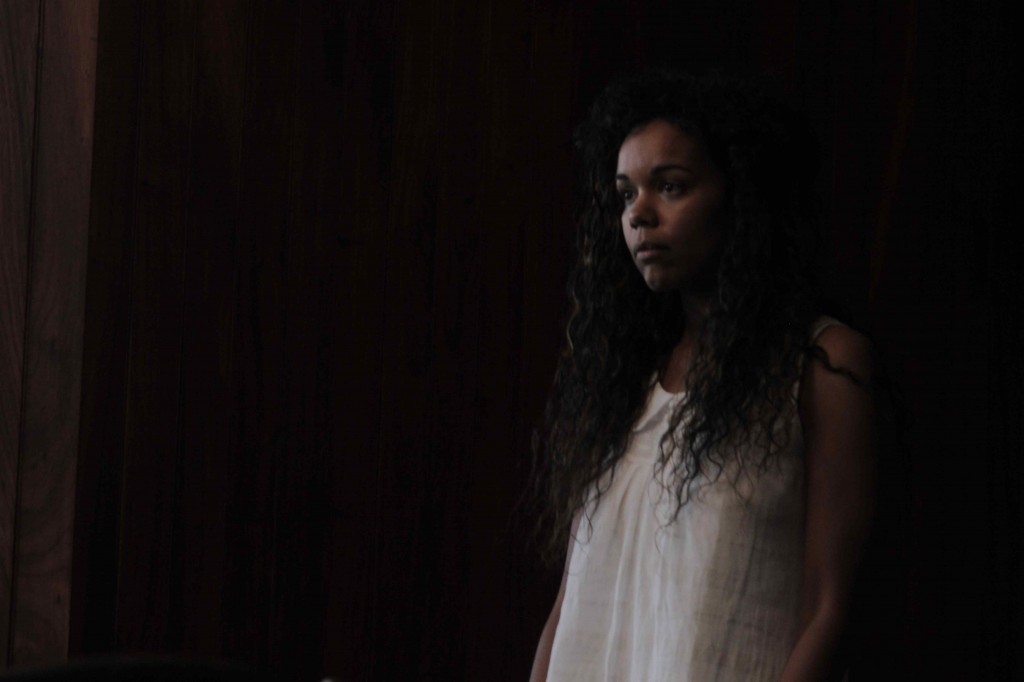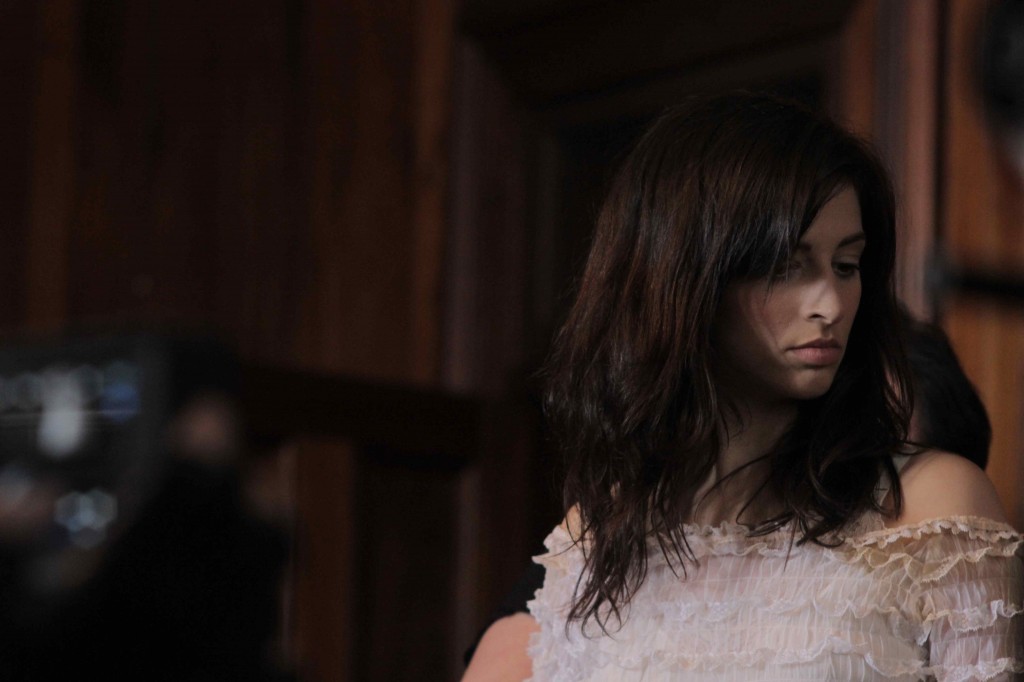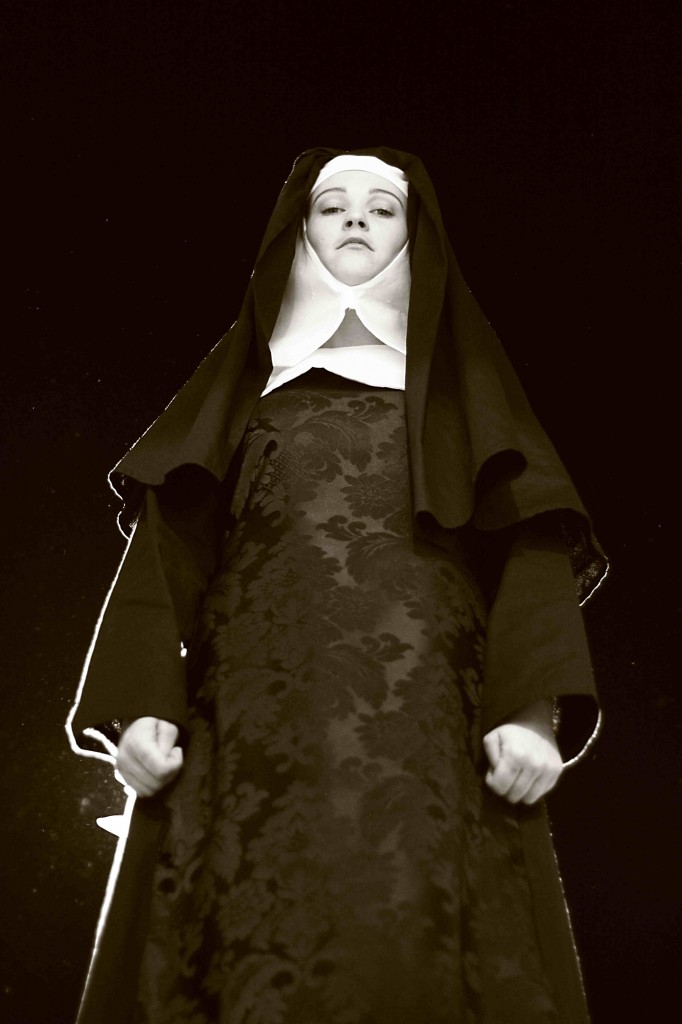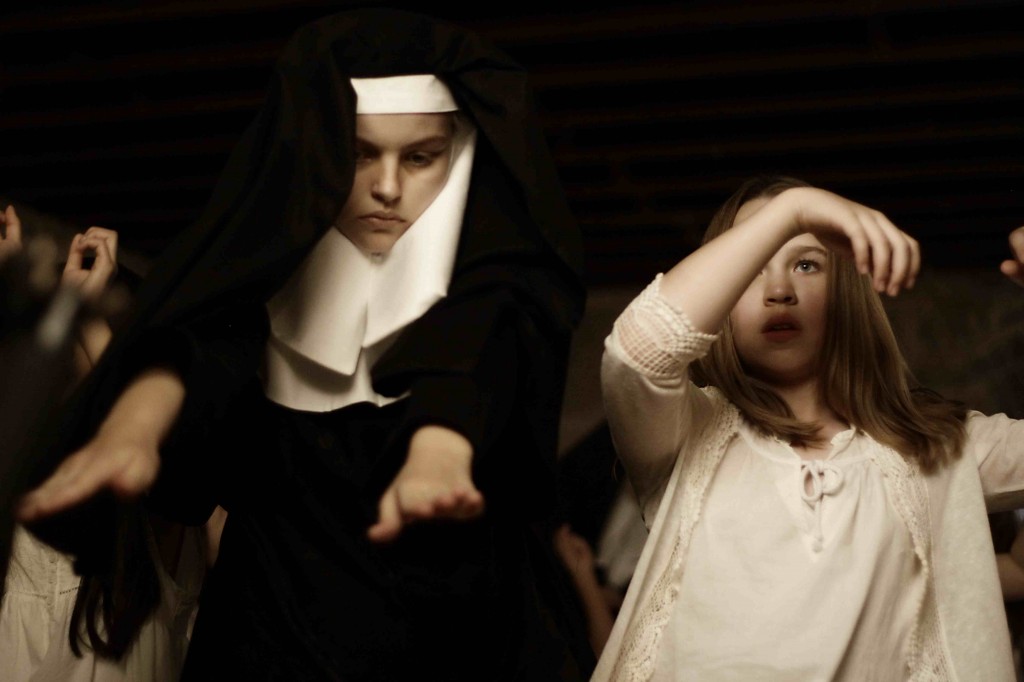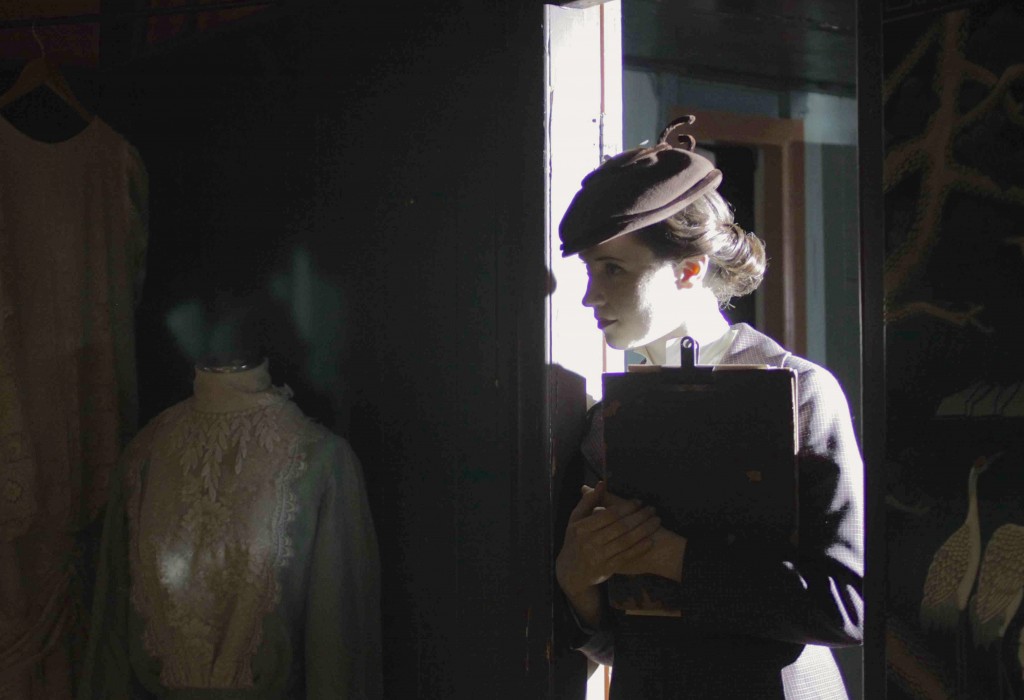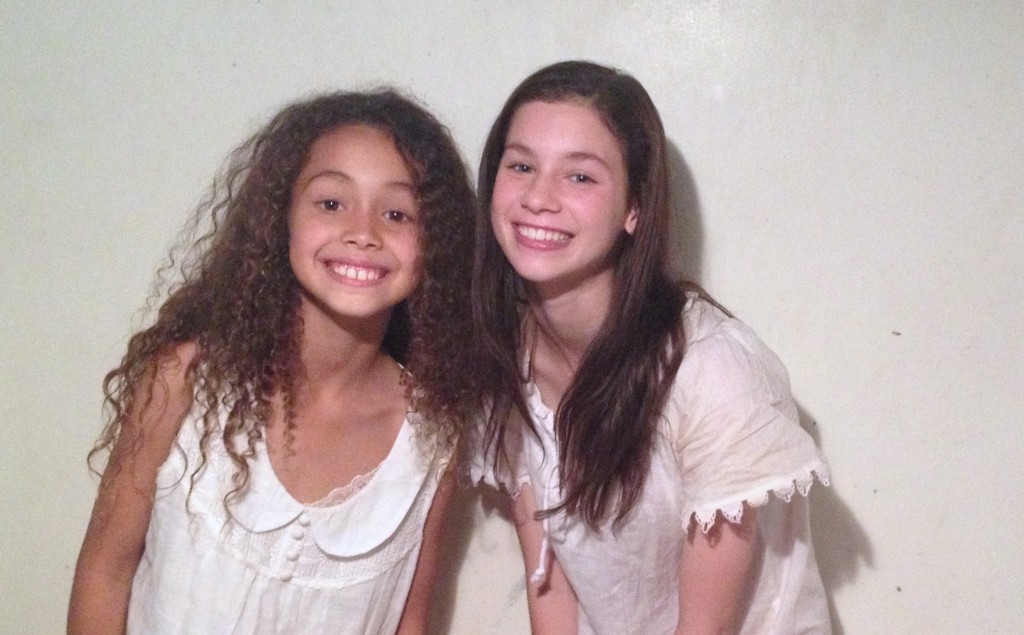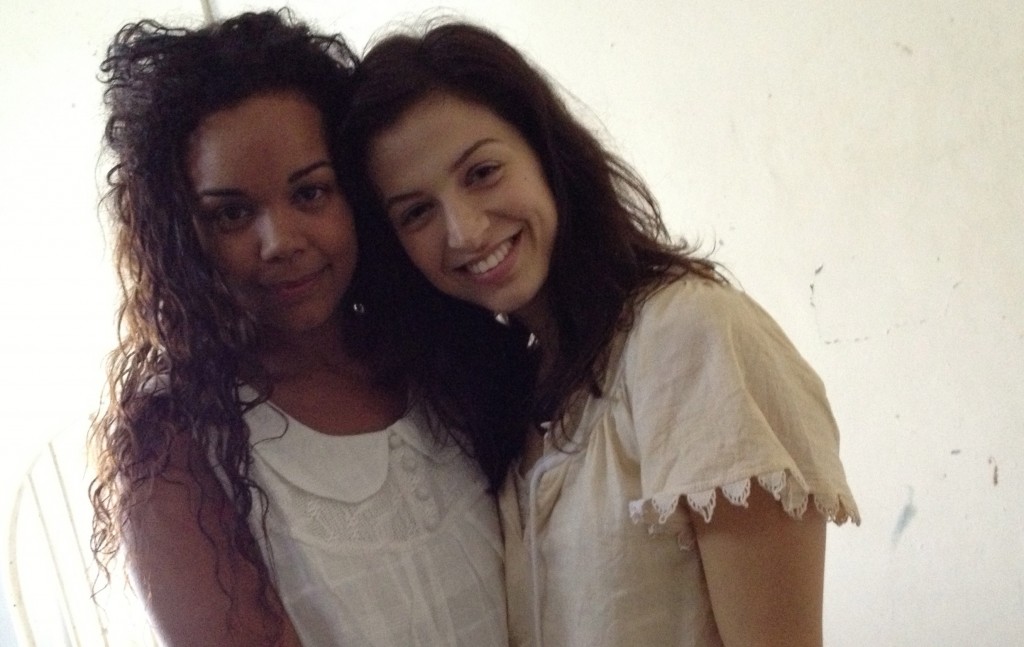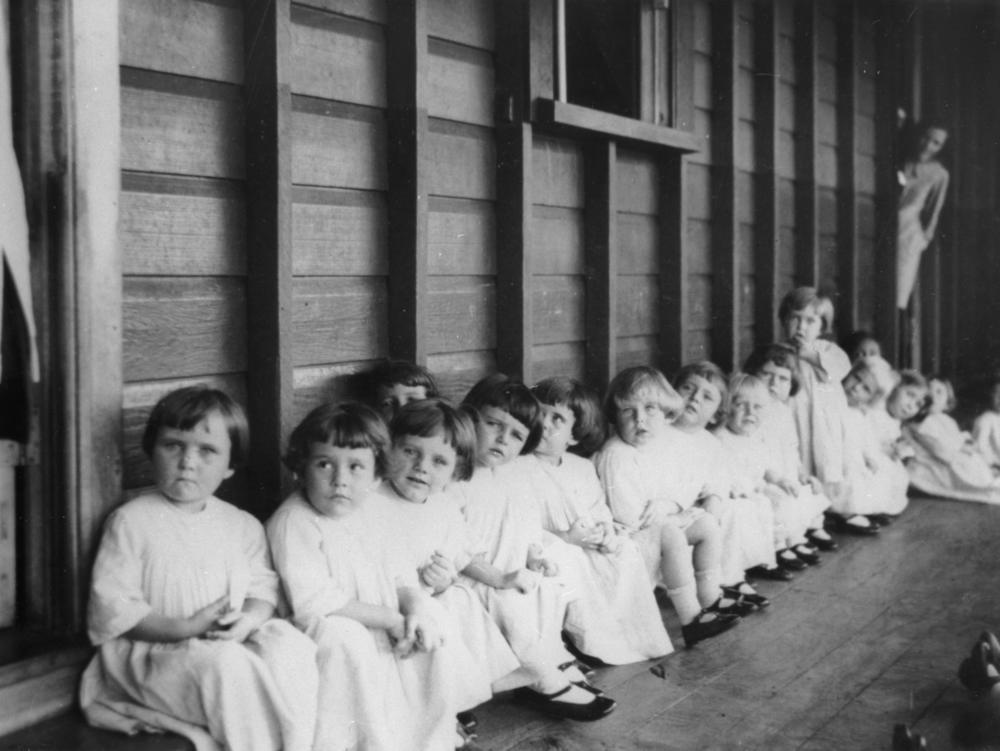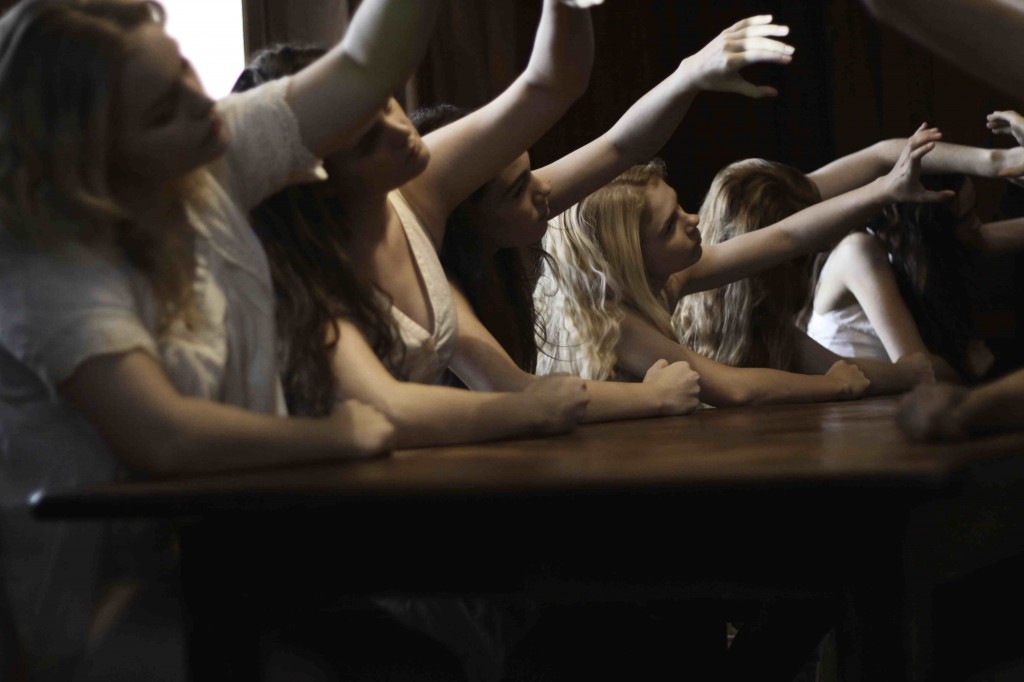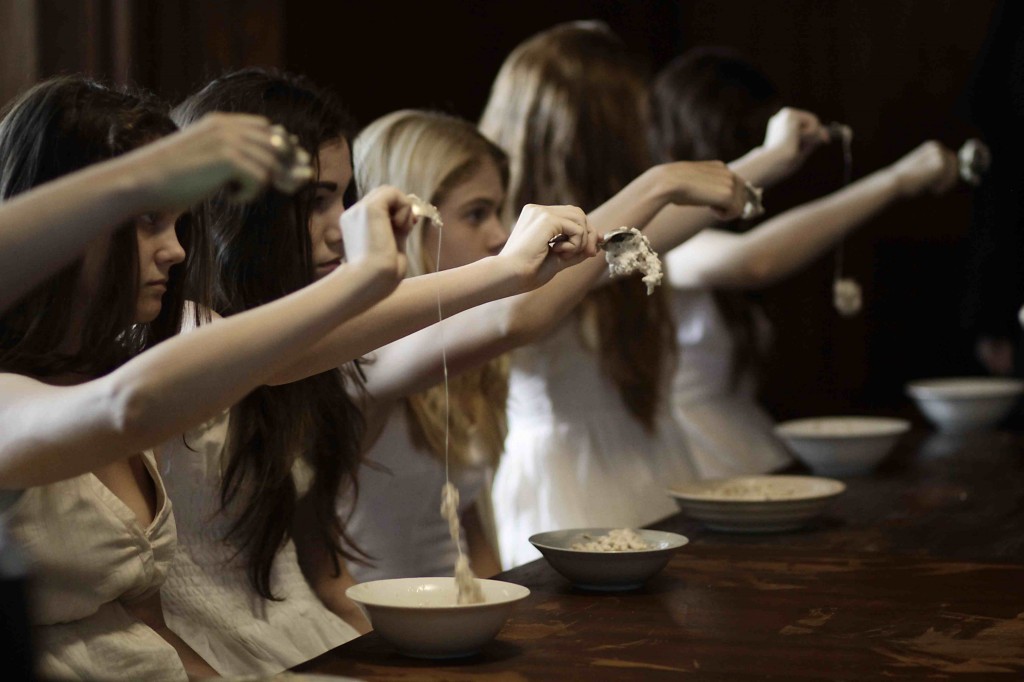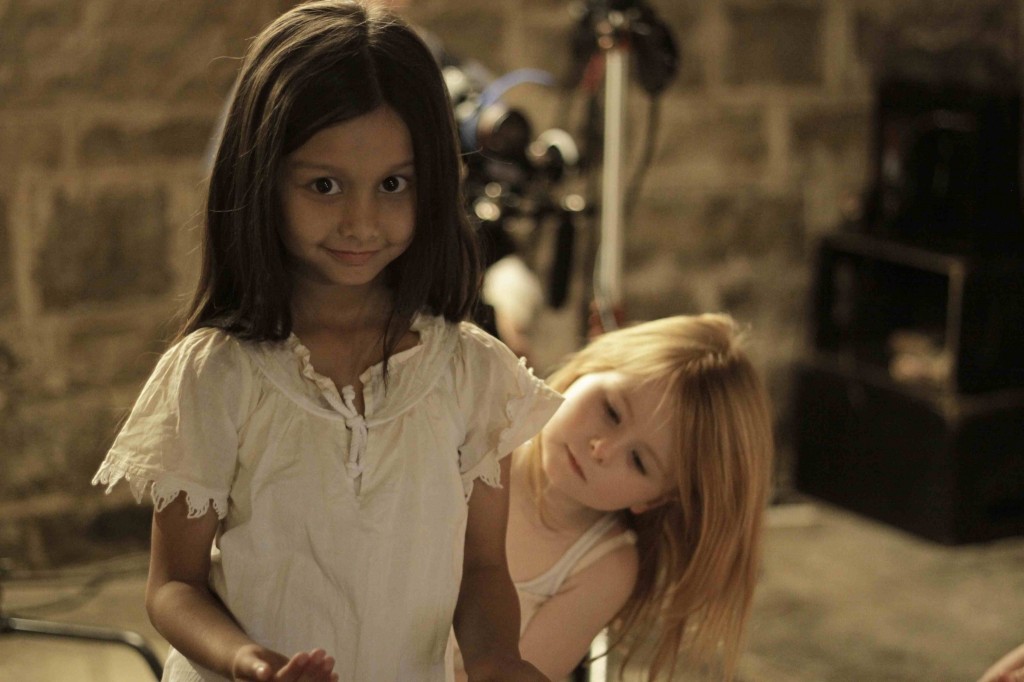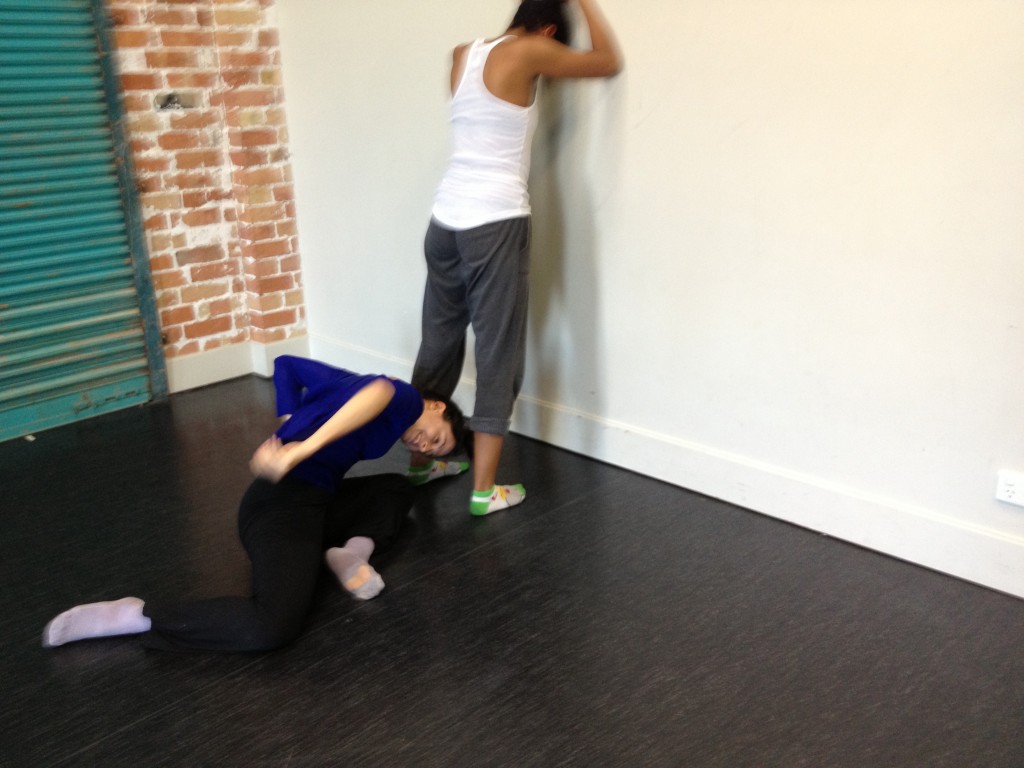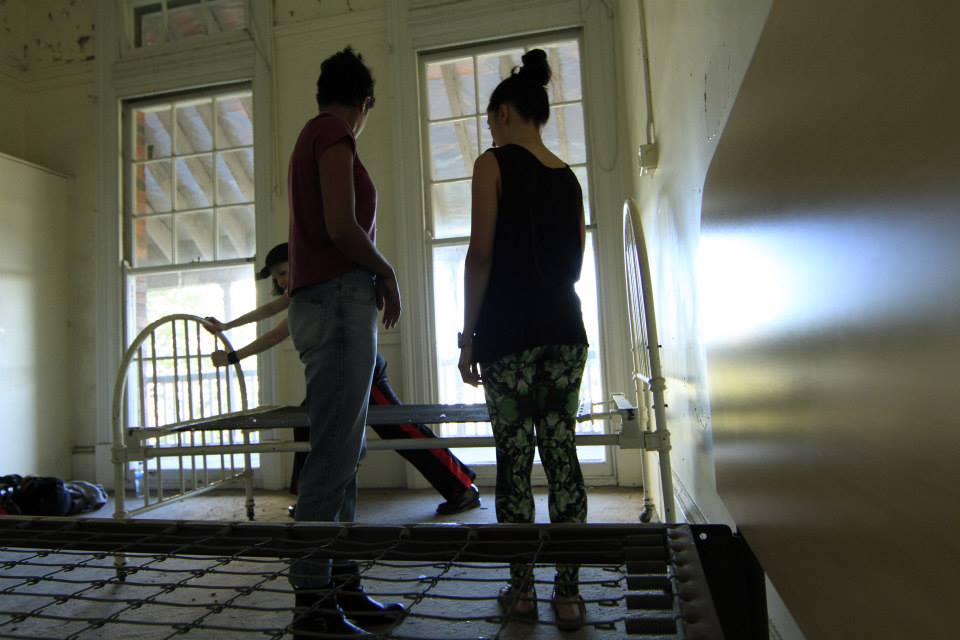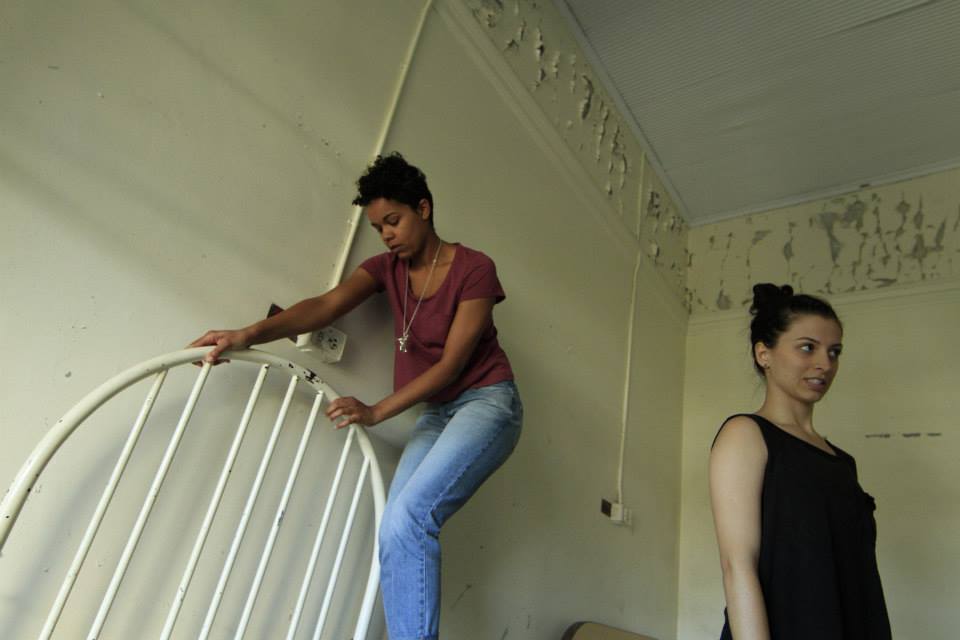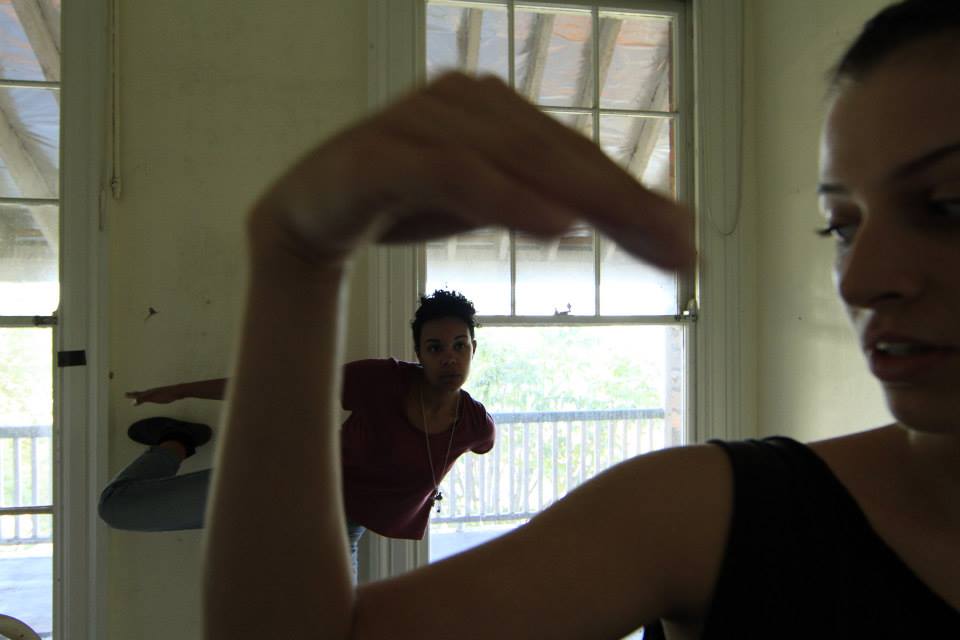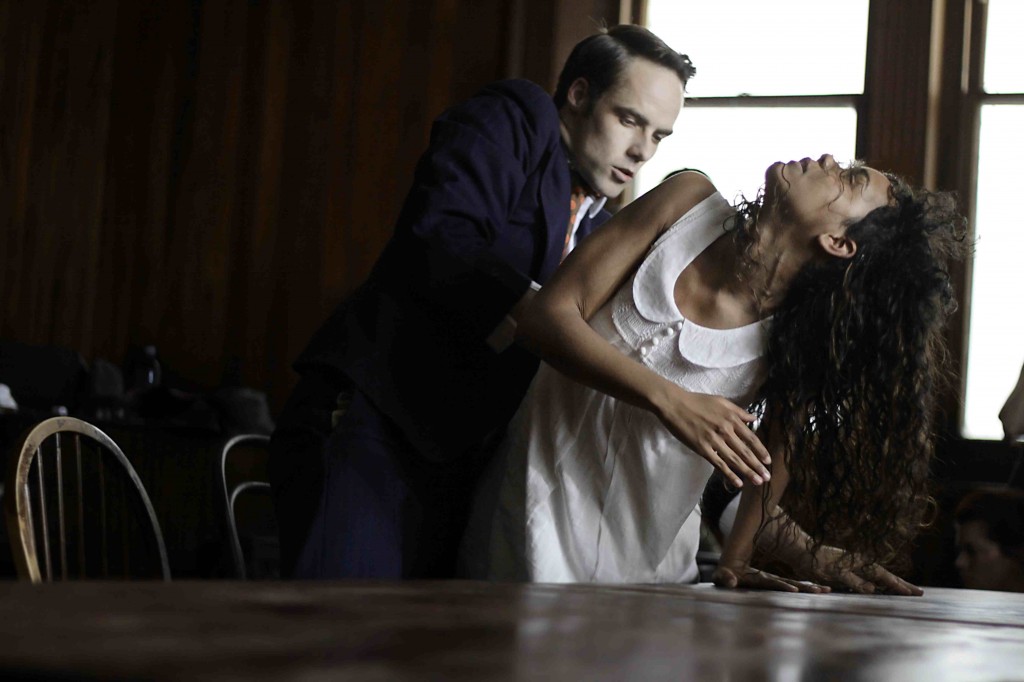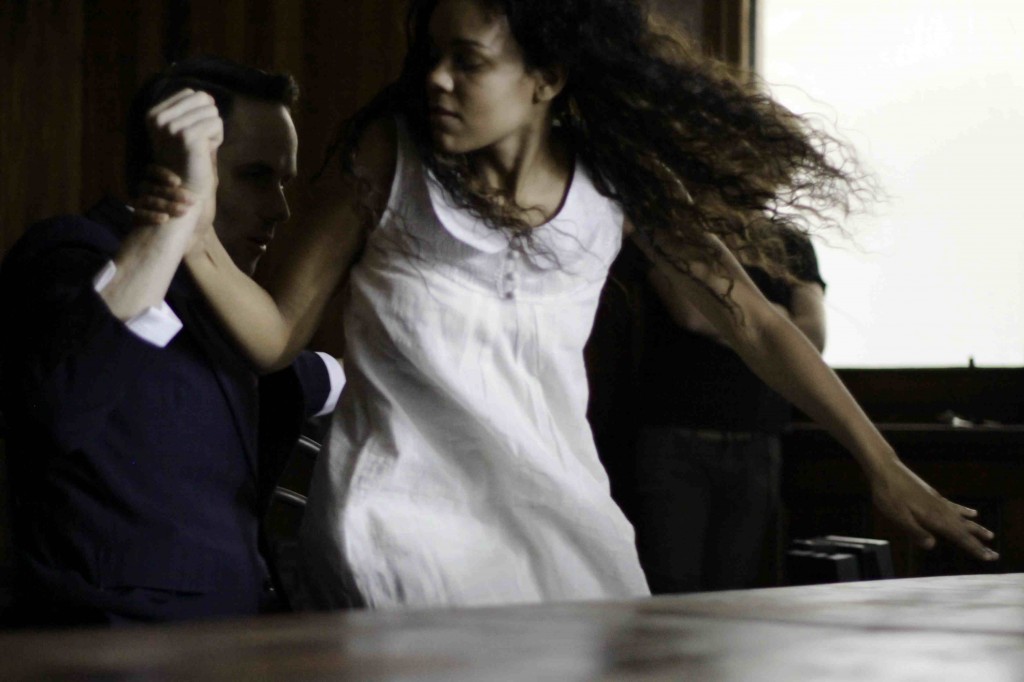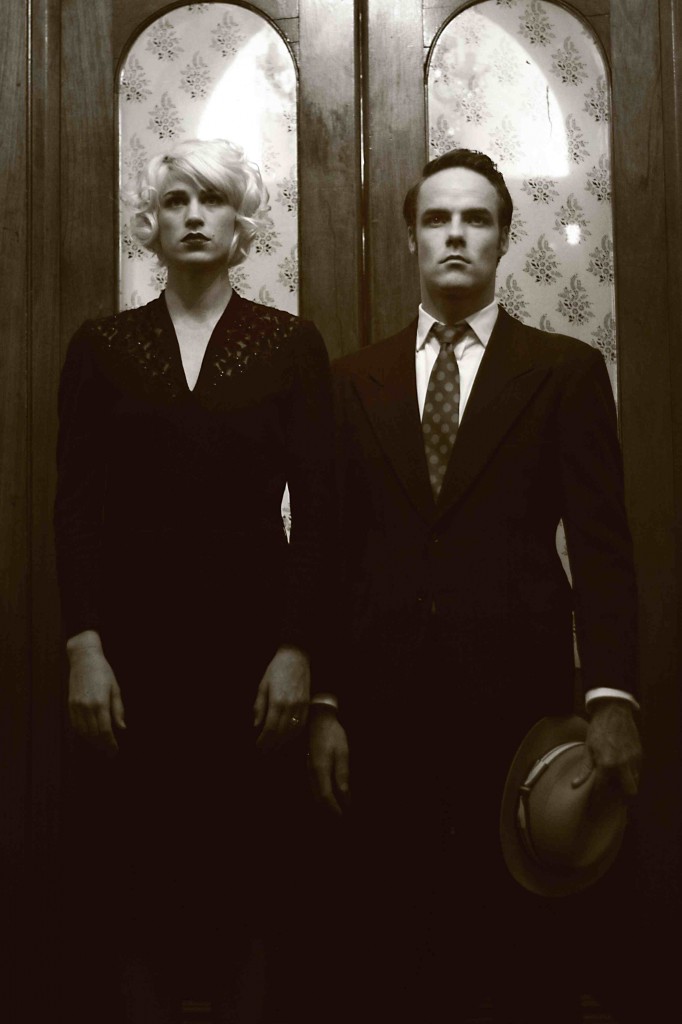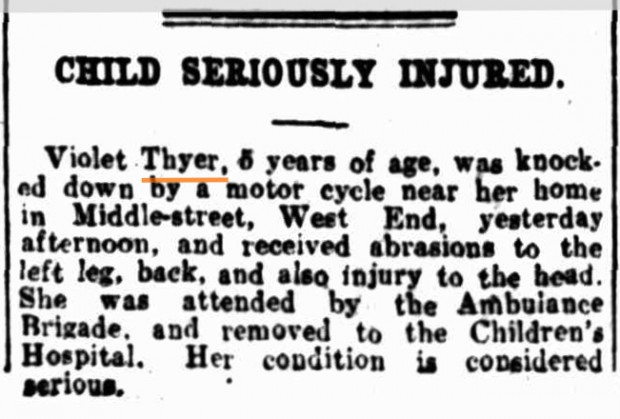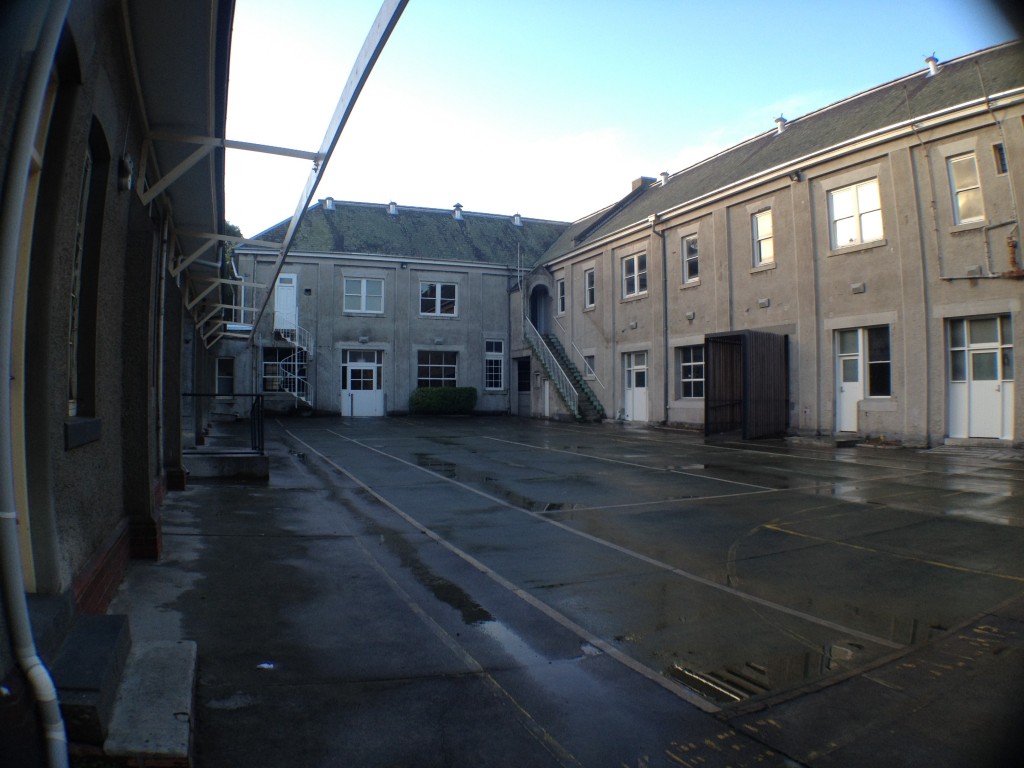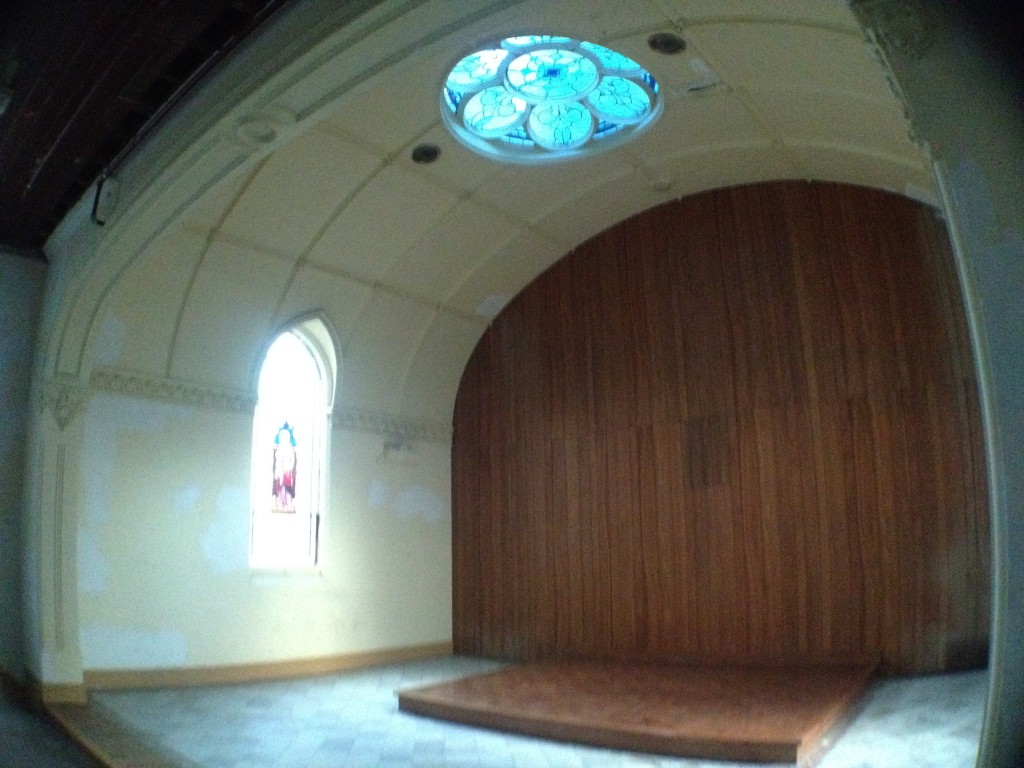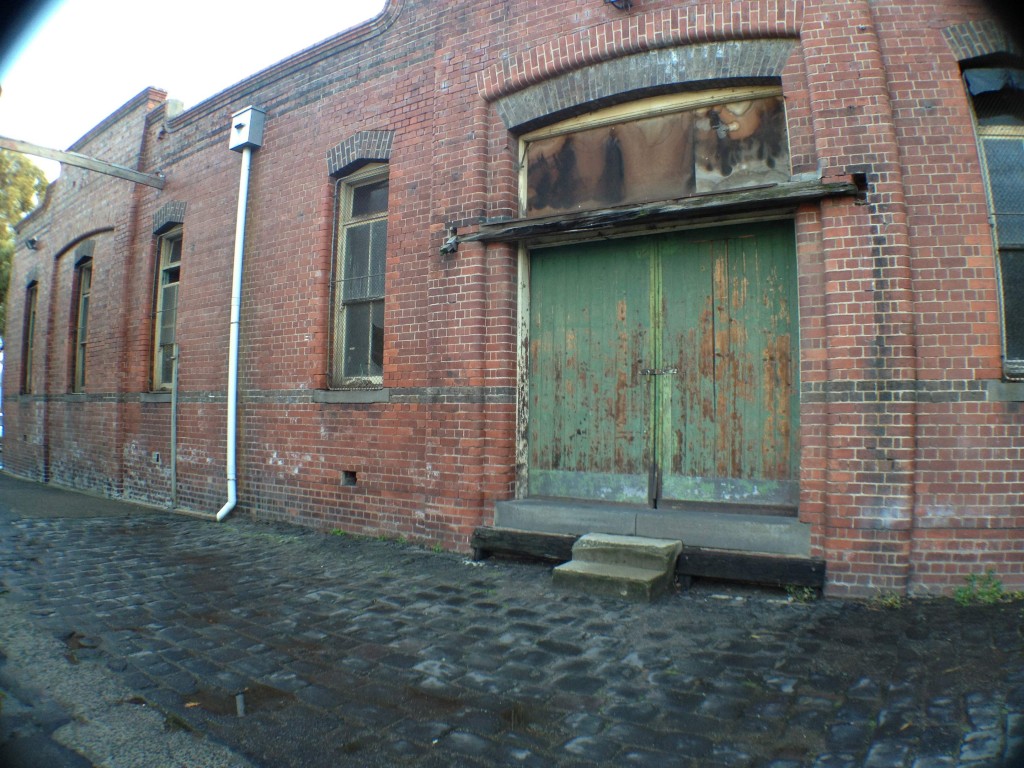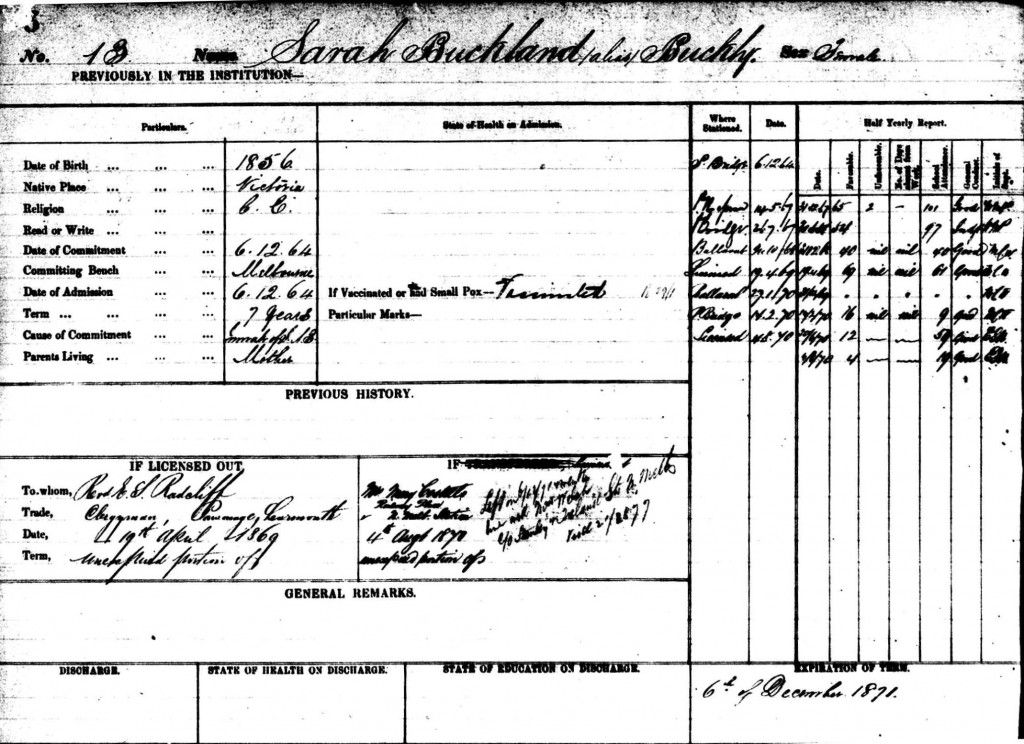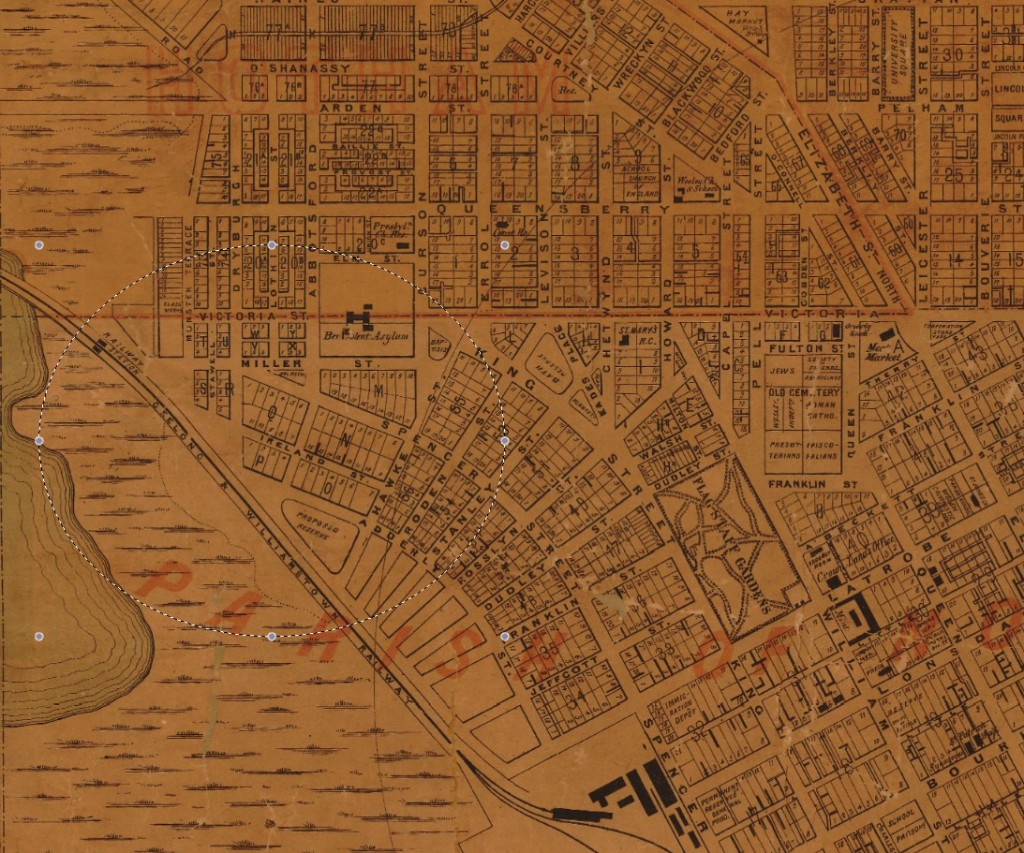Journey of making Ward of State
Part 3: Cast, Characters, & Rehearsals
After so much research came the planning and preproduction stage. That included location scouting, script development, creative development and sharing of visual references, costumes, finding the right people to shoot the project, not to mention casting of convent girls parts, scheduling rehearsals, finding studio space, and about a three page list of “to dos” in 8 point font! And last, but not least, there were rehearsals. For me, that is the most exciting part. Photo from day one of the shoot – photo by Bob Dobson.
Casting:
The dancers had to be convincing performers, have the right look and movement style for the part. As I had decided to focus more on the story of the parents, Richard Causer and Libby McDonnell were cast in this role.
The Ward of State story was evolving to be that the father character would be a stepfather of the girl (and there wasn’t a step father in my family story). Some aspects of my Nan’s father were kept (being a performer and entertainer mostly, probably suave and creative), but his character was developed from other people stories, which were told to me in confidence. Because I don’t know what my great grandfather was really like, I needed to draw aspects of this character from elsewhere, and it was good to create a character from a mish-mash of stories.
Chafia Brooks and Mariana Paraizo were cast as the hero girl (daughter/ stepdaughter) and her best friend who becomes a protective mother figure in the convent.
These four dancers formed the four lead characters (Richard Causer, Chafia Brooks, Libby McDonnell, and Mariana Parizo). Their biogs are on the Pozible fund raising campaign http://www.pozible.com/project/28432/105044
Four photos below are from Bob Dobson’s behind the scenes photos:
Below: Richard Causer: Photo by Bob Dobson
Below: Libby McDonnell. Photo by Bob Dobson
Below: Chafia Brooks. Photo by Bob Dobson
Below: Mariana Paraizo. Photo by Bob Dobson
I first worked with Richard Causer and Chafia Brooks back in April 2002 when my brother Grant and I held an audition for Darren Hayes’ Crush Music Video, and I first worked with Libby McDonnell in 2005 in my “The Factory” Show. I’ve lost count of how many times we’ve worked together since, but there have been numerous projects. Over the years Chafia, Lib and Richard have become close friends, and It’s been amazing to watch their careers develop as well as also see them grow as people.
It was such a great thing to reunite with these three to work together again. There are always lots of laughs in rehearsal (even despite the serious subject matter of the work). The only gloomy thing about working together is saying goodbye at the end of the project. This time, Richard flew back to London, Chafia flew back to Melbourne, and Libby went back to the numerous creative endeavors she’s working on. Mariana Paraizo was a wonderful new addition to the team, and was an absolute delight to work with.
There were also four part-timers on board: (below photos are by FenLan Photography)
The work being a narrative required a few diverse and colourful characters including:
Below: Head Nun Liz Whelan, photo by FenLan Photography
and doubling as Nuns, and older convent girls, were: Kirri Webb, (photo by FenLan Photography)
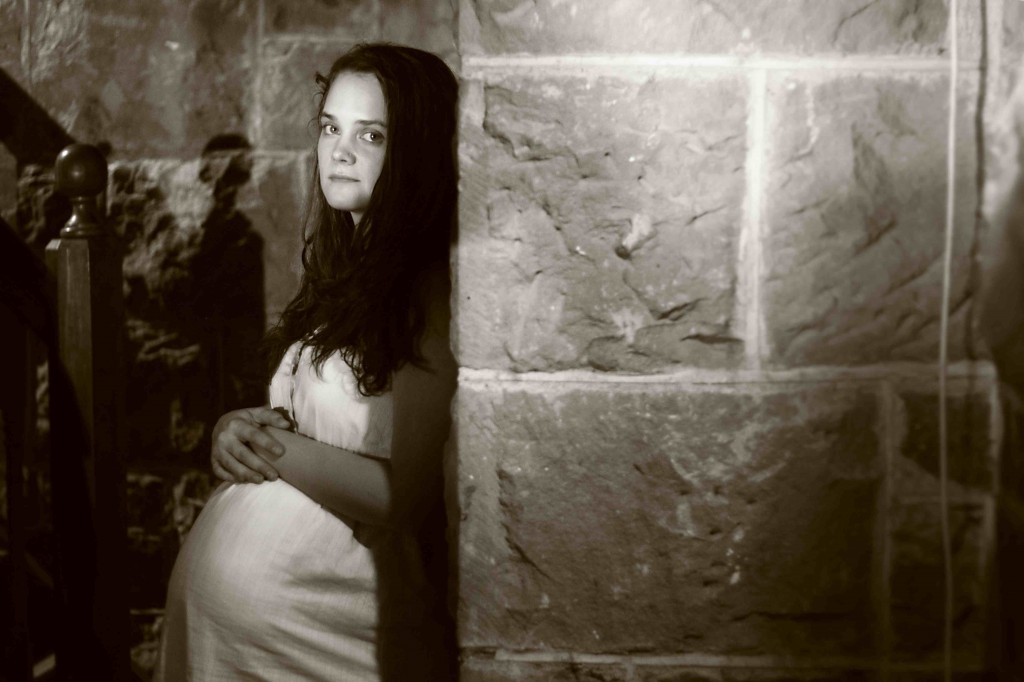
Sarah Fitzgerald in Nun fatigues (photo by FenLan Photography)
Below: Last but definitely not least, Frances Hannaway, who also doubled as Nun, convent girl, and as child’s services government authority figure. (photo by FenLan Photography
It was important to have a few parts understudies. Even Richard Causer jumped in as an understudy of the Nuns. He called himself a “Nunderstudy”. More about the Nuns in another edition.
With all of the above dancers, sometimes I’d forget to tell them what a great rehearsal or take they have done… just because I assume they know. I’m used to giving a few more corrections I guess. Furthermore, this team was a genuinely lovely group to work with. They all helped out in ways beyond the call. They were aware of the limited time and workload I had. Most of them/ their families/ partners even contributed to the Pozible campaign. They worked ridiculously hard and long hours! They were spectacular!
Casting Convent Girls:
I’m sure some people were worried when I said I was casting children and teenagers, because it’s simply a given that a younger person (even a tertiary dance graduate) isn’t at the level of a professional dancer. However, the work is situated in a convent of girls, and it would have been very strange to have an entirely cast of professional adult dancers playing 7 year old girls.
The idea was to see the girls when they were younger, and take the audience on journey of the story – seeing them as younger girls and later as older girls.
A series of auditions were held for the convent girls. The girls were aged between 7 and 15 and were sourced from various training institutions in Brisbane. These girls formed two casts – a younger version and an older version of the girls.
The girls were cast based on variety of things. And this was based much more than on their dancing ability. The dancing wasn’t going to be hard core – that was for the leads. But they needed to be good dancers so that simple movement was done well. Secondly, the girls needed to have acting skills, and they had to speak to camera, and look suitable on camera. Thirdly, their suitability of their ‘look’ for the part. I wanted a variety of shapes and sizes and ages, from a mix of ethnic backgrounds (but they couldn’t be too tall either).
Two of the girls were cast as younger versions of the hero girl and her best friend because they (Chafia and Mariana) needed to be seen at a younger age.
Below: Savannah Foran-McDaniel and Kahlee Wadell.
I was more interested in matching their movement style and expression, gesture, body types, rather than having identical faces to their older selves. There’s no point having an identical face if they can’t dance.
Inspiration from images researched:
In so many photos that I researched from the 1930’s line and repetition were noticeable traits. Here’s some examples:
Photos are of St Vincent’s Nudgee in 1928 (http://www.nma.gov.au/exhibitions/inside_life_in_childrens_homes_and_institutions/work)
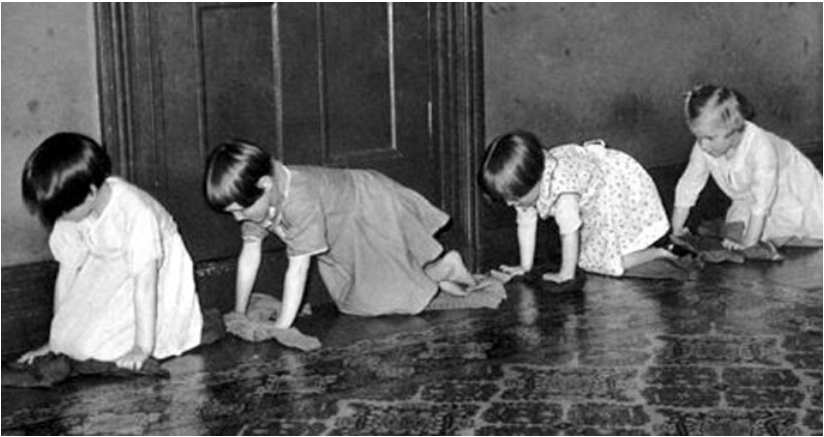
Photo above – inspiration from images filtering into rehearsal by incoprorating the sense of line, and repetition in the work, as well as including some simple canons. For the convent girl line cannons, I wanted to focus emotional content and and simplicity in the movement rather than pack it full of new-fangled moves.
Experience of the project for the younger girls:
Given the girls who were on board for ‘experience’ as the budget was far from a commercial budget and the girls were not paid (and keep in mind I didn’t paying myself either), I thought it would be more valuable for the girls to have a holistic experience of such a project. Rather than just spoon-feed them the movement (although things were locked down later), there was character development workshops, phrases learnt that I showed them how to convert to a simplified wall phrase, and gave them examples of how they might be put on the spot, or need to learn something quickly on the day. Much of what I developed with them was culled or simplified (which is always the case). I wanted them to experience the whole process of being on board such a project.
They experienced lots of waiting around and late nights, but hopefully enjoyed observing the professional dancers work and rehearse. I hope it was a unique and valuable experience for them. I was impressed with their decorum and enthusiasm.
Below is a photo by FenLan – rehearsing the girls prior to a take on day one (there’s some older girls in these photos too)
Below: Two of the youngest girls: Lucy Chin (6 years old) and Molly Neal (4 years old) who were super cute and also very professional for their years!
In terms of the cast, there were extras when we shot in Toowoomba, but I’ll mention them in a later blog.
Rehearsals:
Rehearsals occurred over a very short but intense period of 14 rehearsals prior to a 6-day shoot. We rehearsed at The Judith Wright Centre mostly, as well as at other 4 other rehearsal spaces in Brisbane, as well as on location. Rehearsing back at the Judith Wright Centre was fantastic, and Ausdance Queensland’s Making Space programme meant the rehearsal space was more affordable. Some of the rehearsal spaces were much more costly, so I was appreciative of the Judith Wright Centre and Ausdance Qld’s support.
Rehearsal time is valuable. It’s costly, and often there are other things that encroach on rehearsals. Sometimes people expect to do press, photographs, costume fittings; schedule various meetings, phone calls, or visits during this time. Not only does this use up valuable rehearsal time, but also it can be hard to jump from ‘creative brain’ to ‘admin brain’. So aside from some necessary hair extension testing (which went in the creative brain category anyway), rehearsals were uninterrupted. We even had time to have discussions about character and intention too! I also allowed time for rehearsal on location, which was an important part of the choreographic process.
iphone snap rehearsing at the Judith Wright Centre:
Processes
In working with the leads, there was a lot of discussion of character. Brian Lucas also came in and cast his eye over the work and did some work shopping with the characters in context to the movement in mind. As most sections of movement were developed in context to the part, or manipulated in context to the characters and narrative, having Brian look over this was incredibly valuable.
Working with dancers that I’ve worked with numerous times before, meant that we could make the work over a shorter time frame. They all knew my style of movement, knew a few of my phrases were drawing from. The flip side was that I could trust them with tasks on these phrases, and that I could come back and continue to manipulate this or create a duet from this such was the case with the Chafia and Mariana dorm room duets. Some parts were redeveloped from other choreographic developments or work that I wanted to re-visit.
There was lots of manipulation of movement for the space. For example, a duet that was created for against two walls in a studio, had to later be translated to a room with two beds, and lots of bird poo. That was something I enjoyed most (translating the movement and working with the space)
Below: 7am rehearsal on set – translating the section from the above (in rehearsals). These three photos were snapped by director Sarah-Jane Woulahan. Given the amount of bird poo, I think Chafia and Mariana were thinking ‘you’ve got to be kidding’. But it was nothing compared to other projects in the past! Chafia and Mariana were good sports about it.
I also enjoyed choreographing with the camera, lens, and framing in mind, thinking about how it would look in the space and on camera. Rehearsal footage after most rehearsals was uploaded to Director Sarah-Jane Woulahan and DOP Kevin Holloway, who were not based in Brisbane.
Below are a few more behind the scenes photos from the first day of shooting – photos by FenLan:
In the next blog I’ll focus on the collaboration with the creative team who work behind the scenes (producer, director, DOP, Production design, 3rd AD, Sound, hair make up, costumes etc etc) with more behind the scenes photos too.
